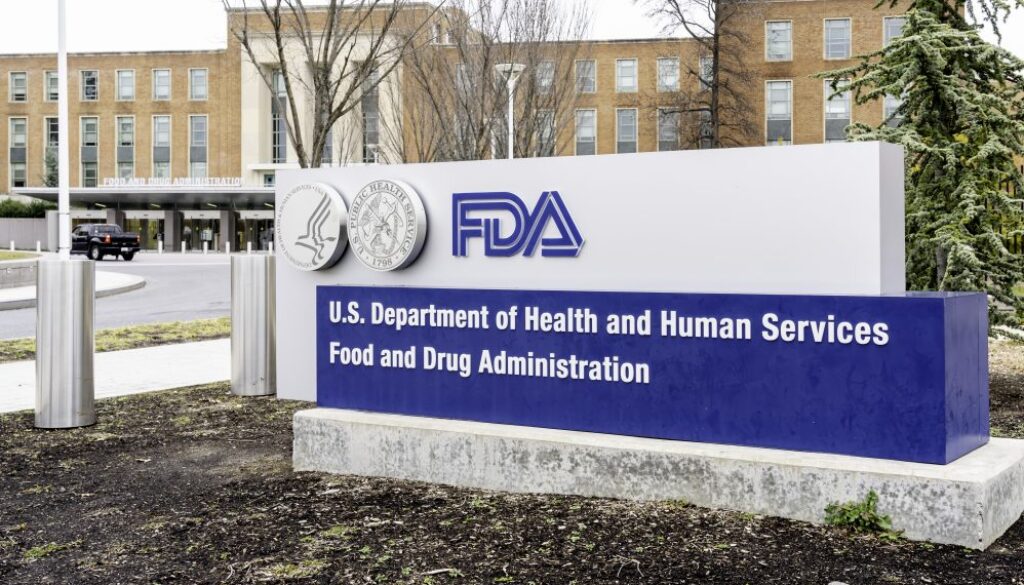Hard to swallow? The FDA moves to take a tougher stance on PFAS in food
The Food and Drug Administration is “responsible for protecting the public health.” Or so says the first line of the agency’s mission statement.
As part of that mission, the agency has been positioning itself as taking a tougher stance with companies involved in the manufacturing and use of a harmful group of widely used industrial chemicals called per- and polyfluoroalkyl substances, short-handed as PFAS. The substances are used to make products resistant to water, grease and stains along with an array of other applications.
The agency has been testing foods to determine what level of PFAS people may be exposed to in their daily diets; working with U.S. states to evaluate potential health threats from foods grown in places contaminated with PFAS; and reevaluating whether approved food contact substances (FCS) are allowing harmful levels of PFAS to migrate into food.
In January the FDA also proposed a new rule to change the process for how it can determine that these substances used in popular foods (think microwave popcorn bags) are no longer safe, and move to protect the public.
But the agency’s talk has not always matched its walk, as suggested by a deep dive into of compilation of documents obtained by the Environmental Defense Fund. The documents reveal years of communications regarding FDA’s actions, and inactions, related to the migration of PFAS, into the American food supply.
The records show that the FDA has continued to allow expanded uses of the chemicals over the years in food packaging and other substances even as the health risks of certain types of PFAS became increasingly apparent.
Scientists say exposure to PFAS is associated with a range of health problems, including a heightened risk of developing cancer, birth defects, liver disease, thyroid disease, decreased immunity, hormone disruption and a range of other serious health problems.
PFAS are often referred to as “forever chemicals” because they do not naturally break down. The man-made compounds are used by a variety of industries for such things as electronics manufacturing, oil recovery, fire-fighting foams, cleaning products and non-stick cookware.
Alarm bells have been sounding over PFAS for decades, but it has only been in the last few years that the FDA has started trying to test food samples to try to get a grip on the extent of dietary exposure risks.
(Side note– The FDA has similarly failed to test the food supply for levels of certain pesticides linked to cancer and other health problems. It was only in 2016 that the FDA said it would start testing food for the weedkilling chemical glyphosate, a chemical considered the most widely used herbicide in the world and on the market since 1974. The FDA only agreed to launch testing for glyphosate in food after the Government Accountability Office (GAO) rebuked the agency for failing to do such assessments and for not disclosing that short-coming to the public.) Since then glyphosate has been found at worrisome levels in scores of popular food products.
I digress. Back to PFAS.
In June of 2019 the FDA revealed that it found PFAS in grocery store meats and seafood as well as in chocolate cake. Records also show PFAS in milk and produce coming from some dairies and farms.
And in late January of this year, news broke that meat from beef cattle in Michigan contained dangerous levels of a type of PFAS called perfluorooctane sulfonic acid (PFOS). (The beef was being sold to schools and to consumers at farmers’ markets.) The contamination was linked to waste products applied as fertilizer on farm fields.
The FDA assures consumers that “when there are detectable levels of PFAS in foods, the FDA conducts a safety assessment to evaluate whether the levels detected present a possible human health concern.”
According to a new report issued by the FDA on Feb. 24, a recent survey of the general food supply showed 89 of 92 food samples had no detectable levels of PFAS.
But critics say the FDA’s assurances ring hollow and the agency is ignoring evidence that PFAS can be toxic at very low levels.
There currently are several state actions underway to try to rein in use of PFAS, and in October the Biden Administration unveiled a “roadmap” aimed at restricting and cleaning up PFAS contamination.
The FDA has also received “voluntary commitment letters” from certain large manufacturers, laying out a three-year phase-out of sales of types of PFAS compounds for use in food packaging. That phase-out started in January 2021.
But it remains to be seen how tough the FDA is actually going to be in the ongoing effort to minimize PFAS exposure through food.
Within the new rule proposed by FDA is a provision that prevents the FDA from making a determination that a food contact substance is no longer safe until the agency first gives the manufacturer “an opportunity to provide data or other information” to respond to FDA safety concerns.
Though that sounds like the FDA may be giving added deference to chemical companies, the provision actually should improve the agency’s flexibility to ban danger substances for safety reasons, according to Tom Neltner, a senior director at the Environmental Defense Fund.
Neltner said the FDA has been limited to acting against harmful food contact substances “only in obvious situations” where the danger is well demonstrated. Rather than the FDA being in a position of proving harm, the new rule should effectively put the corporations in the position of proving the safety of their products, Neltner explained.
“While we think FDA has been far too passive… it is a positive step which we support,” he said.
Members of the public can submit comments on the proposed rule until April 11. See here for comments already submitted.
See copies of more than 100 pages of FDA documents related to a series of PFAS approvals.
 EWG
EWG


